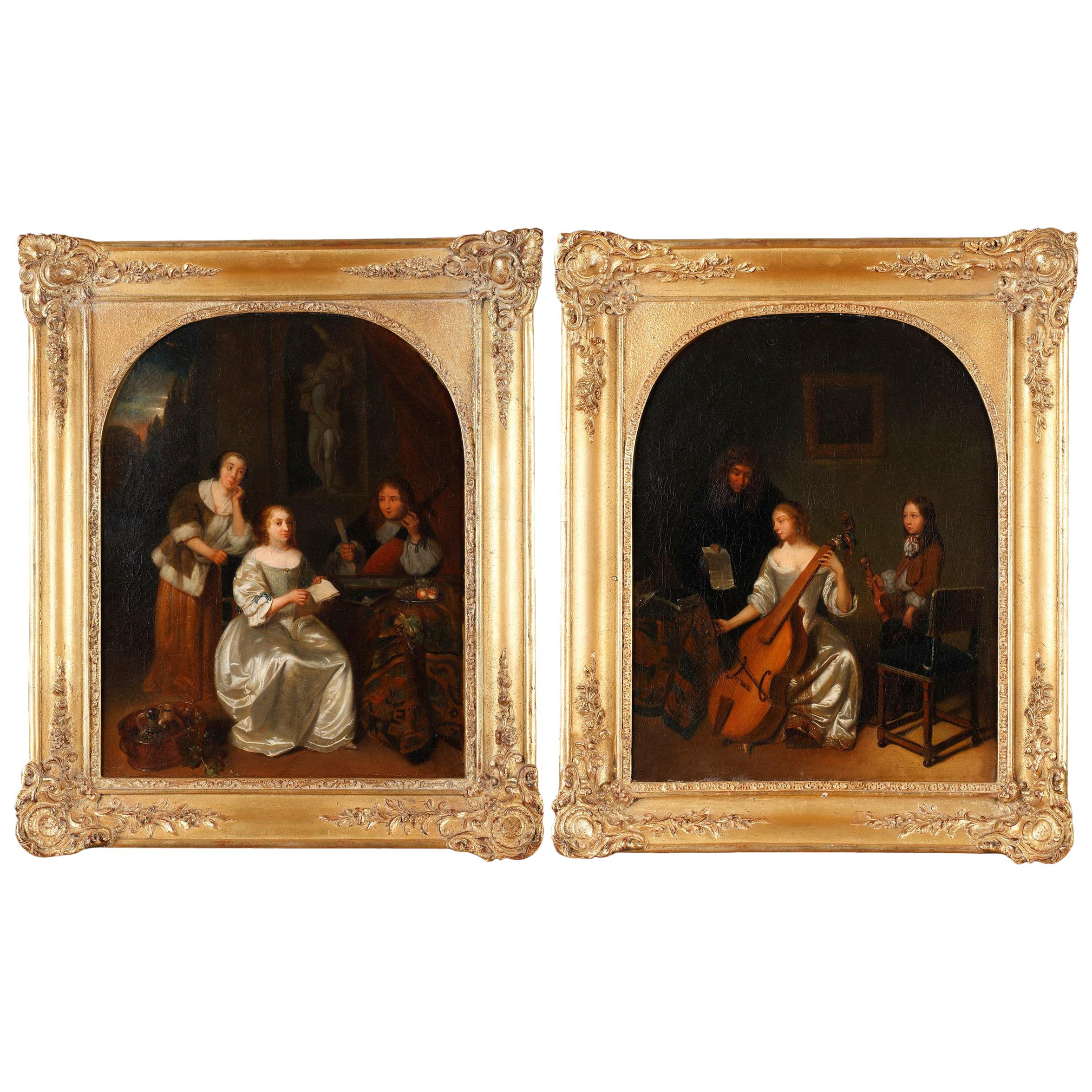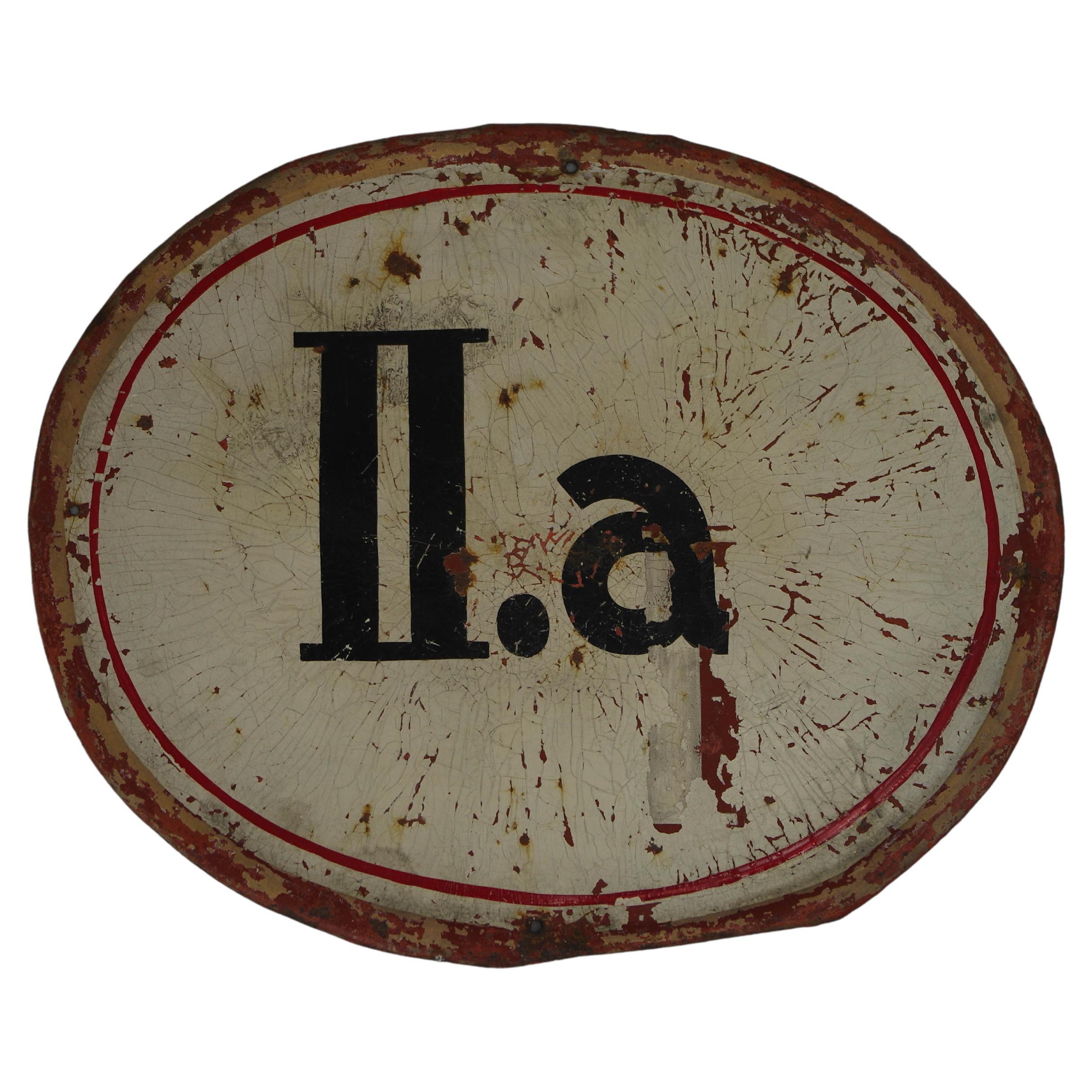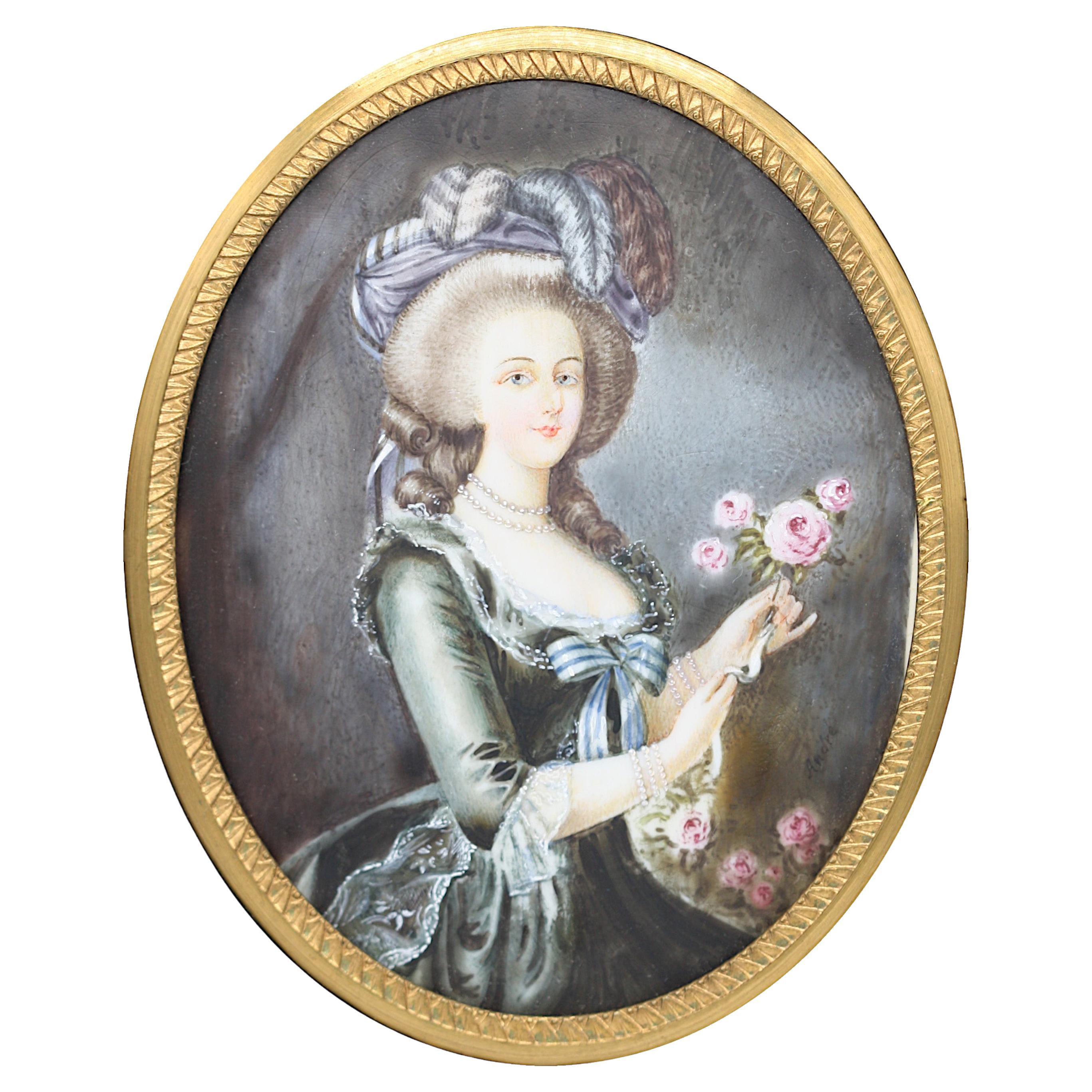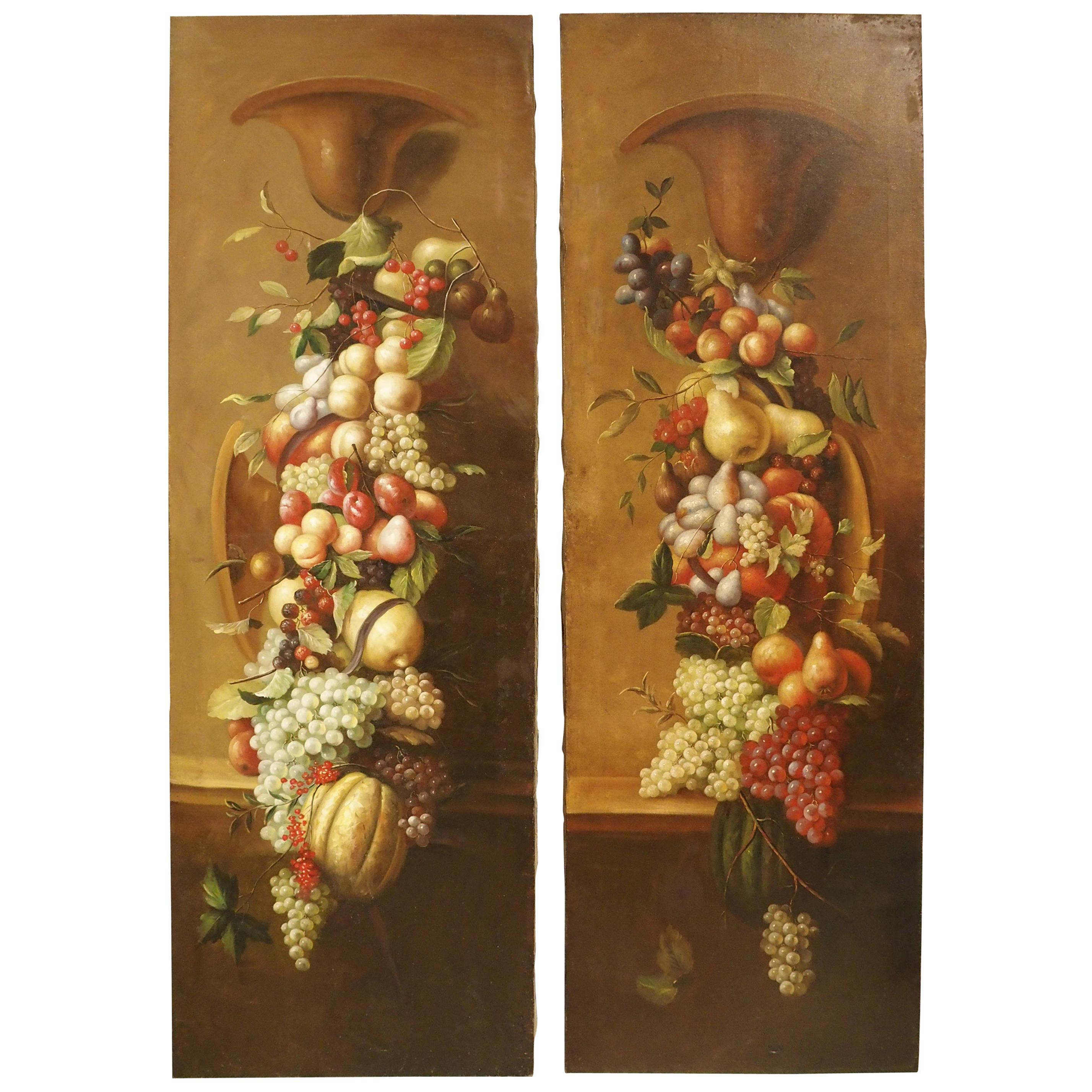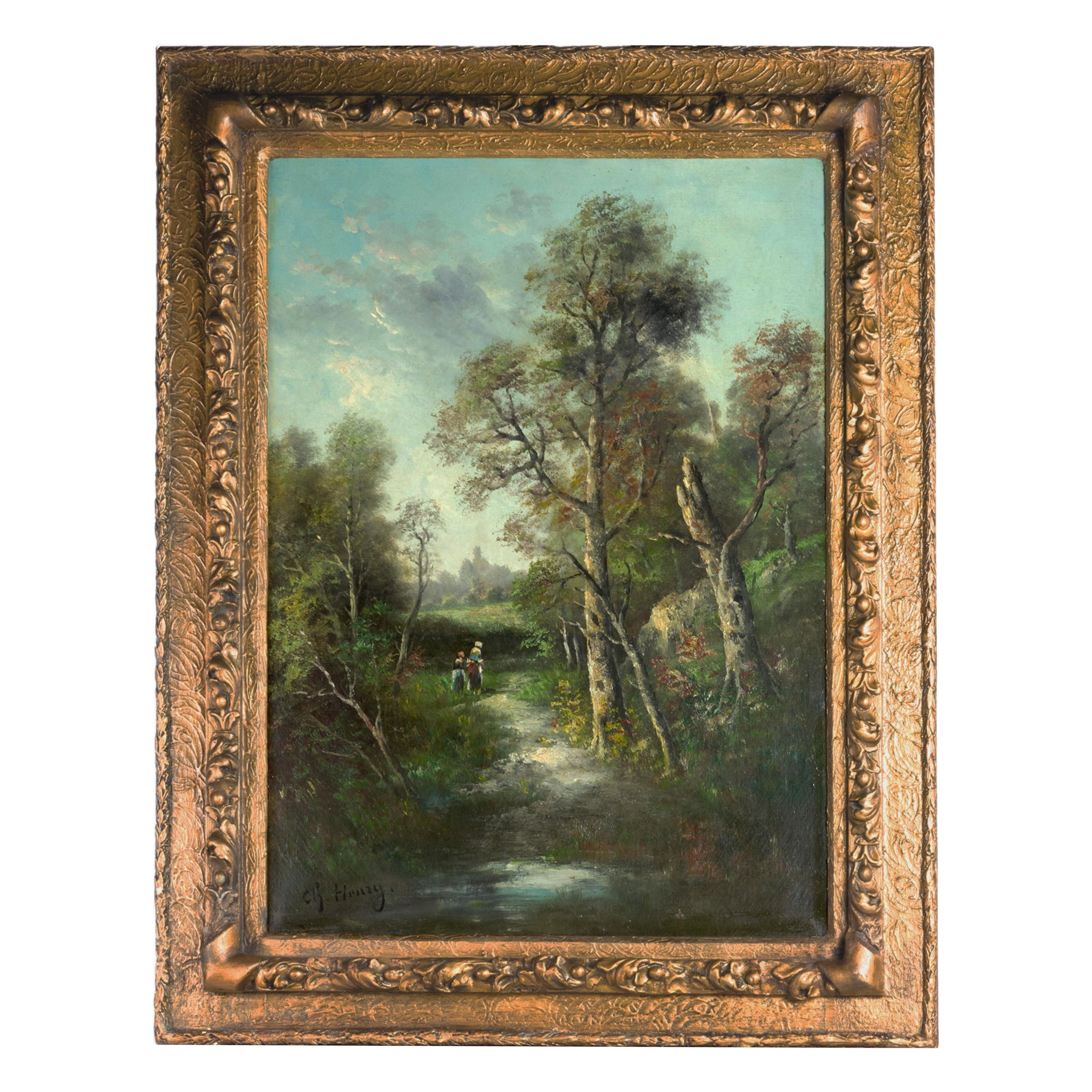Items Similar to Painting "The Tuaregs", Italian school Circa 1900
Want more images or videos?
Request additional images or videos from the seller
1 of 8
Painting "The Tuaregs", Italian school Circa 1900
About the Item
Large Orientalist painting, lovely framed, representing a group of three nomads and their camel in a rocky desert setting bathed in sunlight.
Carry an unreadable signature down right.
The word "Orientalism" appears circa 1830, while the 17th and 18th centuries already developed with a large fantasy the “Turquerie” theme. This trend imbued with exoticism and picturesque can be found in the decoration of Marie-Antoinette and Comte d’Artois’ private apartments at the end of the 1780s. It is in the 19th century, with the Bonaparte-led Egypt expedition of 1798 that the craze for Orient, its mysteries, beauty, eroticism and light fascinates. However, the overtaking of Alger by the French in 1830 remains the real starting point of this artistic movement and of the apparition of the term Orientalism.
With the development of steam maritime liaisons and railways, painters, sculptors, cabinet-makers and ceramists join militaries and salesmen in discovering yet unknown countries.
Riding camels and wearing turbans, French artists, visit Persian and Arabic countries, such as Eugene Delacroix (1798-1863) who drew hundreds of watercolors and sketches from his travels to Alger and Oran in 1832. It will remain a source of inspiration for years to come. Other artists such as Decamps, Fromentin or Gerome, Lamartine, Nerval or Gautier, all fed by the desire to uncover new civilizations or even to adopt the local lifestyle, also went towards those sunny and arid lands. In the meantime, English are focused towards Egypt and Palestine. In Austria, Switzerland, Germany, Italy, other European artists undertook travels of their own.
From those travels, fine Arts in Europe burst in new themes: the despotism of the tyrant, the sensuality and opulence of harems, the picturesque of colored street scenes, the richness of men and landscapes. In France, Orientalists became famous during the Second Empire.
Emperor Napoleon III, aristocrats as much as the bourgeoisie searching for exoticism filled up order books of renowned artists. It is not primarily the academic style of the Orientalists that matter, but mostly the exoticism of their pieces that fascinate the public; such as the sculptor Charles Cordier (1827-1905) who innovates with the polychrome marbles and onyx from Algeria, or Emile Guillemin (1841-1907) whose works are edited by Ferdinand Barbedienne (1810-1892). Those artists joined scientific expeditions in Orient, in order to report cultures of a multi-ethnic civilization.
- Dimensions:Height: 70.08 in (178 cm)Width: 78.75 in (200 cm)Depth: 1.97 in (5 cm)
- Materials and Techniques:Canvas,Oiled
- Period:1910-1919
- Date of Manufacture:circa 1910
- Condition:
- Seller Location:PARIS, FR
- Reference Number:
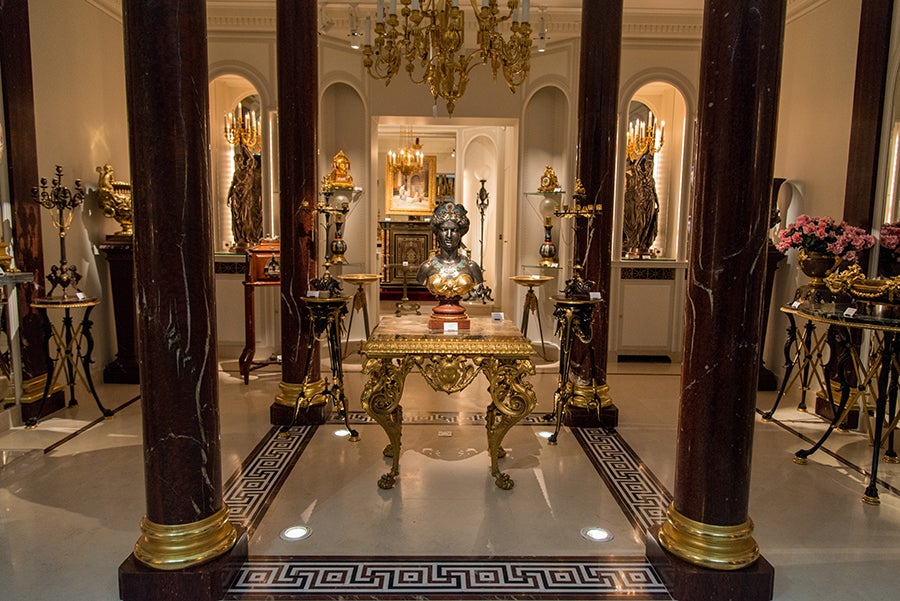
About the Seller
4.9
Vetted Seller
These experienced sellers undergo a comprehensive evaluation by our team of in-house experts.
Established in 1997
1stDibs seller since 2018
76 sales on 1stDibs
Typical response time: <1 hour
Associations
International Confederation of Art and Antique Dealers' Associations
- ShippingRetrieving quote...Ships From: PARIS, France
- Return PolicyA return for this item may be initiated within 7 days of delivery.
More From This SellerView All
- Painting "The Music Lesson", French School, Circa 1840Located in PARIS, FRCharming pair of paintings representing young women in well-off interiors during their music lesson, one illustrating a singing lesson and the other a Cello lesson. The theme of the music lesson...Category
Antique 1840s French Paintings
MaterialsCanvas
- "The Source" Illuminating Sculpture, Italian School, circa 1900Located in PARIS, FRSigned on the base Prof. G. Ca...? Charming illuminating alabaster sculpture representing a young naked woman leaning on rocks, and seated at the edge of a source concealing a lig...Category
Antique Early 1900s Italian Art Nouveau Table Lamps
MaterialsAlabaster, Marble
- Painting "The Round of the Nymphs", Signed Henry Picou, France, Circa 1870By Henri-Pierre PicouLocated in PARIS, FRSigned on the bottom right Henry Picou. Charming mythological scene representing a round of nymphs, symbol of fertility and benevolence, wearing crowns of flowers and dancing in the middle of a wheat field. They are accompanied by playful winged cupids flying around them and throwing flowers. Author of genre and portrait scenes, Henry Picou has mainly distinguished himself, in the neo-Greek movement of the second half of the 19th Century, in the representation of allegorical paintings thanks to his delicate and colorful touch. Born on July 27th, 1824 in Nantes and died on July 17th, 1895 in Paris, Henry-Pierre Picou is an history, portrait and genre scenes painter, who has distinguished himself in the Neo-greek movement. Entering at twelve years old in the workshop of the painter Paul Delaroche, he then follows Charles Gleyre’s teaching in the Ecole Royale des Beaux-Arts de Paris. In Paris, he becomes friend with young painters among which Jean-Léon Gérôme, Gustave Boulanger and Jean-Louis Hamon. This group, who is passionate about recent discoveries about Roman and Greek antiquity, starts exposing in the Salon in 1847, and Jean-Léon Gérôme’s painting, le Combat de coqs, awarded with a gold medal, allows them to be noticed and devotes Gérôme as the leader of this new Neo-greek movement. This artistic movement quickly becomes fashionable, also influencing the decorative arts and the architecture. Henry Picou wins the second prize of Rome in 1853 for his painting Jésus chassant les marchands du Temple, preserved today in the Ecole nationale supérieure des Beaux-Arts in Paris. When Neo-greek artists are not so popular anymore, Henry Picou devotes himself to a career as a portraitist and genre scene painter, and exposes to the Salon paintings...Category
Antique 1870s French Paintings
MaterialsCanvas
- Painting "Music Lesson" by Giuseppe Ghedina, Italy, circa 1860By Giuseppe GhedinaLocated in PARIS, FRImportant painting representing a music lesson, composed of a group of three elegantly dressed ladies, listening to a musician playing the lute and accompanied on vocals by a man hold a musical score in hand. The artist’s genre scenes are distinguished by the softness of the eyes, the romanticism of the attitudes and the harmony of the tones used. Giuseppe Ghedina is born in Cortina d’Ampezzo on March 1st, 1825, he started studying in 1838 at the Academy of Fine Arts in Venice. Pupil of Ludovico...Category
Antique 19th Century Italian Romantic Paintings
MaterialsCanvas
- Painting "Saint-Malo" Signed Nolot, French School, 1969Located in PARIS, FRNice painting representing the harbor of Saint-Mao, in France, painted by Pierre Nolot and dated "69".Category
Vintage 1960s French Paintings
MaterialsCanvas
- Paintings "Courtly Love" and "Inconstant Love", French School, Late 19th CenturyBy Jean-Antoine WatteauLocated in PARIS, FRMeasurements with frames: Height 135 cm (53 in.), width 94 cm (37 in.) Magnificent pair of important paintings on the theme of “Fêtes galantes” and so dedicated to the art of sedu...Category
Antique Late 19th Century French Paintings
MaterialsCanvas
You May Also Like
- Sign from the School Classroom Door, 1900sLocated in Praha, CZHand painted sign from classroom door. More similar signs with different numbers (pictures on request)Category
Antique Early 1900s European Art Nouveau Paintings
MaterialsMetal
- Italian School 17th Century Oil Painting The MusicianLocated in Madrid, ESItalian School 17th Century Oil Painting The Musician Italian school 17th century oil painting the musician 17th century oil on canvas with a cos...Category
Antique Mid-17th Century Paintings
MaterialsWood
- Miniature Painting European, Circa 1900Located in West Palm Beach, FLMiniature painting European. Circa 1900. Marie Antoinette Painted by Andre, Signed. After the original by Charles Le Brun (1619-1690) Measuring 3...Category
20th Century Decorative Art
MaterialsPaint
- Pair of Tall Antique Italian Still Life Paintings, circa 1900Located in Dallas, TXFrom Italy, this pair of still life paintings depict fruit and vegetables beneath an urn flowing down and over a bench. The compositions c...Category
Early 20th Century Italian Paintings
MaterialsCanvas, Wood, Paint
- 1900s Painting, Harmon, Charles Henry (1859-1936), American SchoolLocated in Lisbon, PTAn oil exquisit scene of a Californian forest with two persons walking, signed "C H Harmon" by the proeminet american master painter Charles Henry Harmon of the still virgin woods of...Category
Early 20th Century American Paintings
MaterialsCanvas
- Oil Painting of Antwerp, circa 1900Located in Los Angeles, CALate 19th-century Belgian oil painting of an industrial Antwerp port mounted in a thin wooden frame. An abstracted tangle of smoky, charcoal browns and creamy ochres, the scene is mo...Category
Antique Early 1900s Belgian Paintings
MaterialsCanvas
Recently Viewed
View AllMore Ways To Browse
Antique Painting Cabinets
Emperor Painting
Orientalist Painting
Orientalist Paintings
French Empire Paintings
Antique Oriental Painting
Empire Style Painting
Italian Military
Antique School Cabinet
17th Cabinet English
English 17th Century Cabinet
Large German 19th Century Painting
Large Antique Wall Cabinet
Antique Fantasy Furniture
Antique Style Wall Cabinet
The Harem
Antique School Books
Order Of The Bath
